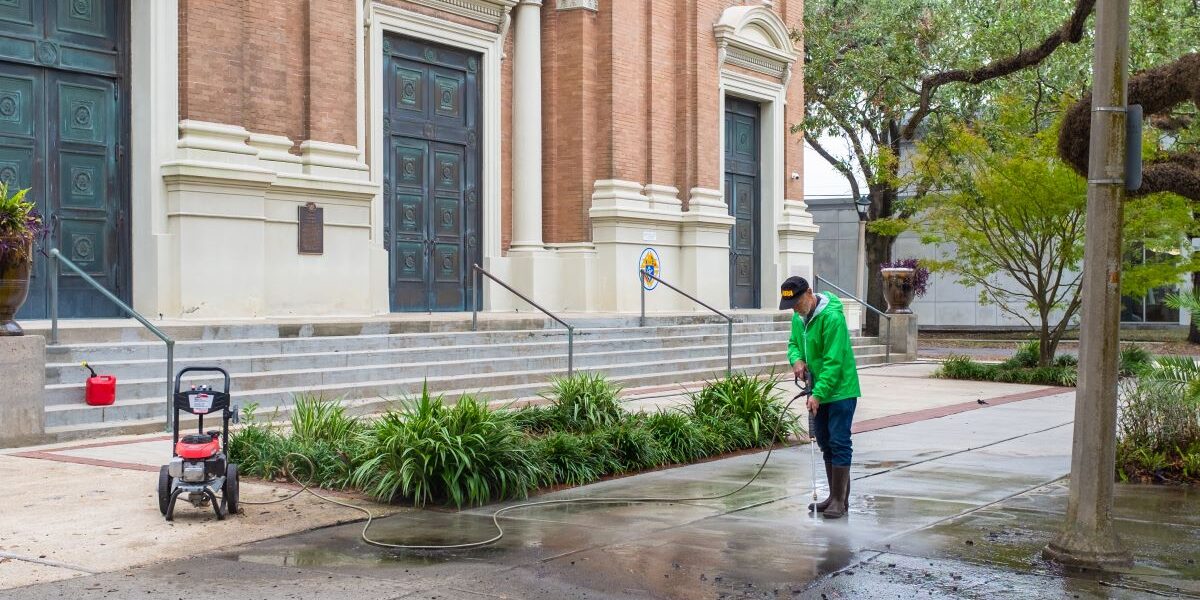Whether your church was built recently or a few decades ago, it’s important to create and follow a maintenance plan that keeps your property in tip-top shape.
Of course, this isn’t just about creating a more appealing environment for your members – it’s also about safety!
Many older churches are prone to water damage, roof damage, and other potential problems that could pose a safety risk to members and visitors alike.
Here are five important church maintenance tips:
#1: Hire a Custodial Staff
There’s no doubt that members prefer attending a church that is clean, neat, and well-kept – that’s why we recommend hiring someone to manage and monitor your church’s custodial duties.
This includes such things as cleaning the pews, disposing of trash, cleaning bathrooms, vacuuming floors, and any other task that helps improve overall cleanliness.
Once you have someone (or a group of people) to help with custodial work, it’s a good idea to create a checklist of tasks that need to be done.
Your checklist should also include information about task frequency (as in, how often the entrance needs to be cleaned), how long each task should take, and even an order of operations.
Alongside your checklist, you may want to create a cleaning schedule. This can help the custodial staff stay aware of important events that might require additional cleaning, such as weddings or funerals.
You’ll also want your cleaning schedule to follow important religious dates and your church’s weekly calendar. For example, more work may need to be done on Saturdays if you have a Sunday morning service.
Depending on your church, some of these tasks may need to be performed on a daily basis (or even multiple times a day), so you should consider the workload when hiring maintenance staff.
Lastly, you’ll want to schedule seasonal deep cleans. Over time, churches can build up a lot of dust in the rafters, so schedule a deep clean every quarter to take care of any long-term build-up.
#2: Create a Monthly or Annual Maintenance Schedule
In addition to general cleaning tasks, it’s also important to stay on top of maintenance tasks that need to be done on a monthly basis or longer.
This includes such things as cleaning the air ducts, changing light bulbs, changing filters in the HVAC system and outdoor maintenance like sealing cracks in asphalt pavement, cleaning the roof gutters, and more.
All buildings need to be properly maintained on a regular basis, but because churches are structurally more unique (and oftentimes fragile), they need a little more attention, especially when it comes to things like the roof and HVAC system.
That’s why your schedule should keep track of both regular tasks and inspections that need to be done on a monthly, quarterly, or annual basis, such as roof and furnace inspections.
It should also include any important dates that certain issues need to be addressed or appointments that need to be attended.
To take your schedule a step further, it could also be helpful to use a third-party task management tool to track important dates and sort by frequency.
These systems allow property and business owners to manage work schedules, events, tasks, and more.
#3: Install Sensors
In order to keep your church prepared in the event of an emergency, such as a power outage or snow storm, it’s essential to take a proactive approach to maintenance.
A good strategy is to install sensors in areas of the church that could be prone to risk. For example, you can install them on doors to monitor who’s coming and going, or you can use them to monitor sounding alarms (such as smoke and carbon monoxide detectors) and temperature changes.
It could also be helpful to install sensors next to water sources, such as water heaters, and in bathrooms to monitor for potential water leaks, especially since many churches have older pipes and water heaters that are more prone to damage.
By strategically placing sensors in water-damage prone areas of your church, you’ll be notified the moment a water leak is detected so you can take immediate action.
#4: Keep Track of Roof Maintenance
Many churches are historic structures and can be very old. And while this makes them incredibly beautiful, it also means they’re more prone to structural damage – especially the roof.
In order to avoid any serious damage to your church, it’s important to properly maintain the roof and consult with a professional.
Based on the complexity of your church’s roof, it could be helpful to hire a roofing professional that specializes in churches.
While you’re getting your roof inspected, ask the roofing professional to keep their eye out for any broken ridges, damaged shingles, dampness, or other roofing issues that could cause long-term damage.
#5: Maintain the Exterior of Your Church
The exterior of your church is the first thing visitors will see, so it’s important to keep it polished and clean! There’s nothing less inviting than an unkept exterior.
If your church has some sort of outdoor aspect to it, you’ll want to have a landscape maintenance plan.
This should include grooming the exterior of the property by sweeping the walkway, cutting the grass, trimming any bushes or hedges, and cleaning around flower beds to keep the area as aesthetically pleasing as possible.
You’ll also want to make sure that the parking lot is clean. During colder months, leaves, snow, and ice should be cleared from any walkways to avoid potential accidents.
This information is courtesy of Notion, which empowers property owners to be proactive in monitoring their spaces and most valued possessions. The Notion smart monitoring system is committed to helping reduce risk and complexities of property ownership, www.getnotion.com.













